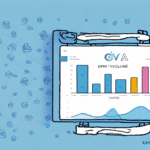How to Create an Effective Cart Abandonment Campaign
Cart abandonment is a prevalent challenge for e-commerce businesses. It occurs when a customer adds products to their shopping cart but leaves the website without completing the purchase, leading to lost sales and revenue. However, cart abandonment also presents an opportunity to win back customers and boost sales through a well-crafted cart abandonment campaign. This article explores strategies to create an effective cart abandonment campaign and maximize its impact.
Understanding the Importance of Cart Abandonment Campaigns
Cart abandonment affects nearly all e-commerce websites, with the average rate hovering around 70%. This means that out of every ten customers who add items to their cart, seven leave without purchasing, resulting in significant revenue losses.
Implementing a cart abandonment campaign can help recover some of these lost sales by encouraging potential customers to return and complete their purchases. By targeting customers who have already shown interest in products, businesses can improve conversion rates and increase overall revenue.
One major advantage of a cart abandonment campaign is the ability to reach customers who have demonstrated intent. These individuals have browsed products, selected items, and added them to their cart, indicating a strong interest in making a purchase. Personalized reminders and incentives can effectively persuade them to finalize their transactions.
Common Reasons for Cart Abandonment
Understanding why customers abandon their carts is crucial for addressing the issue effectively. Common reasons include:
- Unexpected Shipping Costs: Additional fees that appear at checkout can deter customers.
- Complicated Checkout Process: Lengthy or complex checkout procedures can lead to frustration.
- Payment Security Concerns: Uncertainty about the safety of payment methods can discourage purchases.
- Comparison Shopping: Customers may abandon carts to compare prices or products elsewhere.
By addressing these factors, such as offering free shipping or simplifying the checkout process, businesses can reduce cart abandonment rates. Additionally, building trust through security badges, clear contact information, and customer reviews can enhance credibility and encourage purchases.
Strategies for Crafting an Effective Cart Abandonment Campaign
Identifying Your Target Audience
To tailor your campaign effectively, identify your target audience by analyzing data such as demographics, purchasing behavior, and cart abandonment history. Conducting surveys or focus groups can provide deeper insights into customer preferences and pain points, allowing for more personalized and relevant campaign messaging.
Crafting a Compelling Message
Your message should be personalized and address the specific needs of the customer. Effective tactics include:
- Offering Discounts or Incentives: Provide special offers to encourage completion of the purchase.
- Highlighting Product Benefits: Remind customers of the advantages and unique features of the products.
- Addressing Concerns: Tackle any hesitations or objections the customer might have had during checkout.
Choosing the Right Timing and Frequency
The timing of your emails is critical. It is generally recommended to send the first cart abandonment email within an hour of abandonment, followed by subsequent reminders over the next few days. However, timing may vary based on your industry and target audience. For instance, luxury items might require a different approach compared to everyday products.
Balance is key—sending too many emails can annoy customers, while too few may fail to prompt action.
Personalizing Your Campaign
Personalization can significantly increase the effectiveness of your cart abandonment campaign. Tactics include:
- Using the customer’s name in emails.
- Recommending products based on browsing and purchase history.
- Offering customized discounts or promotions tailored to individual preferences.
Designing a High-Converting Email Template
A well-designed email template should be visually appealing, mobile-friendly, and easy to navigate. Key design elements include:
- Eye-Catching Product Images: Showcase the products left in the cart.
- Clear Call-to-Action (CTA) Buttons: Make it easy for customers to return and complete their purchase.
- Prominent Buttons: Ensure CTAs stand out and are easy to find.
Optimizing and Measuring Your Campaign
A/B Testing Best Practices
A/B testing allows you to experiment with different elements of your campaign to determine what works best. Best practices include:
- Testing one element at a time to identify specific impacts.
- Setting clear objectives for each test.
- Using a sufficiently large sample size to ensure reliable results.
Key Metrics to Track
To measure the success of your cart abandonment campaign, monitor the following key metrics:
- Conversion Rate: The percentage of abandoned carts that are recovered.
- Click-Through Rate (CTR): The percentage of email recipients who click on links within the email.
- Revenue Generated: The total income resulting from recovered carts.
Analyzing these metrics helps identify which aspects of your campaign are effective and where improvements are needed.
Continuous Optimization
Effective cart abandonment campaigns require ongoing optimization. Strategies include:
- Regularly analyzing customer feedback and behavior.
- Experimenting with new incentives and promotional offers.
- Staying updated with the latest industry trends and best practices.
Learning from Successful Brands
Examining real-life examples of effective cart abandonment campaigns can provide valuable insights. Top brands like Amazon, Nordstrom, and Zappos have successfully implemented strategies to recover abandoned carts. Key elements of their success include personalized messaging, timely follow-ups, and appealing incentives.
By analyzing these campaigns, businesses can adopt proven strategies and tailor them to their unique needs, enhancing their own cart abandonment efforts.
Leveraging Social Media for Expanded Reach
In addition to email, social media can be a powerful channel for amplifying your cart abandonment campaigns. Strategies include:
- Targeted Ads: Use platforms like Facebook and Instagram to reach users who have abandoned their carts.
- Retargeting Campaigns: Display ads to customers based on their previous interactions with your website.
- Exclusive Social Media Promotions: Offer discounts or promotions exclusively through social media channels to entice customers back.
Avoiding Common Pitfalls
To ensure the effectiveness of your cart abandonment campaign, avoid common mistakes such as:
- Over-Sending Emails: Bombarding customers with too many emails can lead to unsubscribes.
- Offering Irrelevant Incentives: Ensure that discounts or offers are appealing and relevant to the customer.
- Poor Tracking and Analysis: Without proper metrics tracking, it's difficult to assess and improve campaign performance.
By recognizing and addressing these pitfalls, businesses can create more effective and successful cart abandonment campaigns.
Conclusion
Creating an effective cart abandonment campaign involves understanding its importance, identifying the reasons behind cart abandonment, and implementing strategic strategies to recover lost sales. By personalizing messages, optimizing timing and frequency, leveraging social media, and continuously analyzing performance, businesses can significantly enhance their conversion rates and overall revenue.
Continuous optimization and learning from successful brands are essential for maintaining an effective cart abandonment strategy in the ever-evolving e-commerce landscape.




















